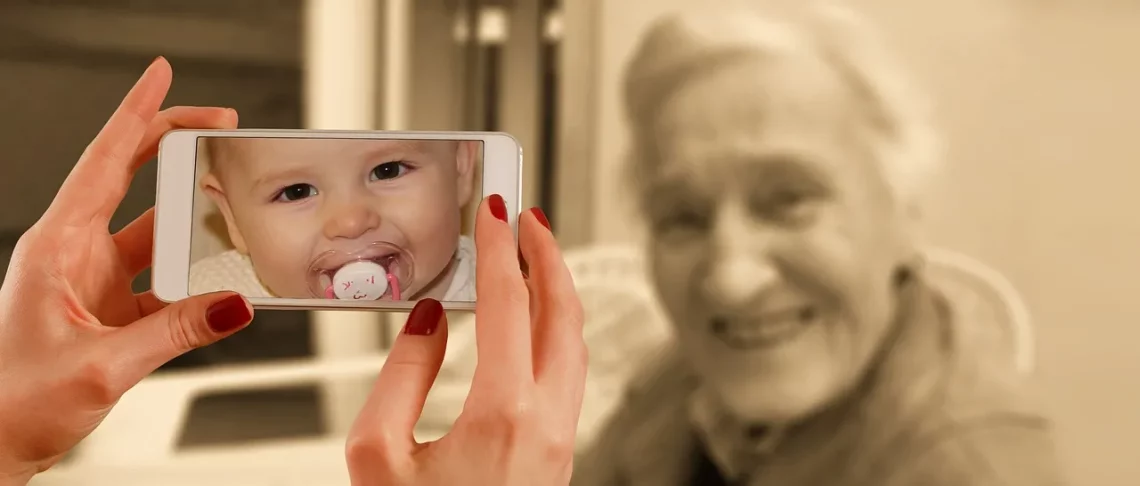
Exploring Artistic Representations of Aging Female Anatomy
Aging is an inevitable aspect of the human experience, often accompanied by a complex interplay of emotions, societal perceptions, and biological changes. While society tends to focus on youth and vitality, the artistic community has increasingly embraced the beauty and depth of aging, particularly in representations of female anatomy. This exploration is not merely about depicting physical changes but delves into the profound narratives surrounding women’s lives, their experiences, and the wisdom gained through time.
Art has long served as a mirror to cultural attitudes, and as the conversation around aging evolves, so too do the artistic expressions that capture this journey. From classical paintings that celebrate the curves and lines of mature bodies to contemporary installations that challenge conventional notions of beauty and femininity, the representation of aging female anatomy has become a vital topic in both art and society. This dialogue invites viewers to reflect on their perceptions of aging, inviting an appreciation for the stories told through the aging form, rather than simply focusing on aesthetic standards.
As artists continue to challenge societal norms, the representation of aging women becomes a powerful statement about identity, resilience, and the richness of lived experience. It encourages a deeper understanding of the physical and emotional landscapes that define the aging process, fostering a community that values all stages of life equally. Through various artistic mediums, the nuanced portrayal of aging female anatomy sparks conversations that transcend mere visuals, offering insights into the human condition itself.
The Evolution of Artistic Perceptions of Aging
Throughout history, the representation of aging in art has undergone significant transformations. In earlier periods, particularly during the Renaissance, aging figures were often depicted in a manner that emphasized wisdom and experience. Artists like Rembrandt explored the depth of human emotion through the portrayal of older subjects, capturing the essence of their life stories in their expressions and features.
As we moved into the Modern era, the focus shifted. Many artists began to challenge traditional views on beauty, leading to a more nuanced exploration of aging. The Impressionist movement, for instance, introduced a sense of movement and light that reframed how we perceive the passing of time in the human form. Artists like Edgar Degas depicted women in their daily lives, showcasing the beauty and complexity of aging without idealization.
Contemporary artists have taken these foundational ideas and pushed them further, using innovative techniques to explore themes of aging. For example, some artists incorporate mixed media or digital art to create dynamic representations that challenge static views of the aging body. These artworks often aim to provoke thought and discussion about societal expectations and the realities of growing older, embracing imperfection and vulnerability as integral parts of the human experience.
Moreover, the rise of feminist art movements has played a significant role in reshaping the narrative around aging female bodies. Artists such as Judy Chicago and Louise Bourgeois have used their platforms to emphasize the strength and resilience of women as they age, presenting a counter-narrative to dominant societal norms that often marginalize older women. Their work not only celebrates the beauty of aging but also critiques the cultural standards that dictate how women should look and behave at different life stages.
In essence, the evolution of artistic perceptions of aging reflects broader social changes. As conversations around feminism, body positivity, and the aging process continue to gain traction, art remains a powerful vehicle for exploring and redefining the beauty and complexity of aging female anatomy.
The Role of Feminism in Shaping Aging Representations
Feminism has profoundly influenced how aging female bodies are represented in art. Historically, women’s bodies have been objectified and idealized, leading to narrow definitions of beauty that often exclude older women. However, feminist artists have actively sought to reclaim agency over these narratives, using their work to challenge stereotypes and highlight the richness of women’s experiences throughout their lives.
The feminist art movement emerged as a response to the male-dominated art world, aiming to create space for women’s voices and experiences. This shift allowed artists to explore themes such as motherhood, sexuality, and aging without the constraints of traditional artistic norms. By focusing on the realities of women’s lives, feminist artists have opened up discussions about the aging process, showcasing it as a natural and beautiful part of life rather than something to be feared or hidden.
Artists like Cindy Sherman employ self-portraiture to explore identity and aging, often using makeup, costumes, and props to comment on societal expectations of beauty. Through her work, Sherman invites viewers to reflect on the roles women are expected to play at different ages and the pressures that come with them. This approach not only challenges the viewer’s perceptions but also empowers women to embrace their identities, regardless of age.
Moreover, the incorporation of diverse representations of aging women in contemporary art highlights the intersectionality within feminist discourse. Artists from various backgrounds bring their unique perspectives to the conversation, emphasizing that aging is not a monolithic experience. This inclusivity enriches the dialogue around aging, encouraging a broader understanding of beauty that transcends age, race, and culture.
As the feminist movement continues to evolve, so too does its influence on the representation of aging women in art. By celebrating the complexities of aging, feminist artists challenge societal norms and inspire a more inclusive appreciation of all stages of life. This shift ultimately fosters a cultural landscape where aging female bodies are honored, respected, and celebrated for the stories they carry.
Contemporary art plays a crucial role in shaping narratives around aging, particularly in how it addresses the experiences of women. Artists today are increasingly using their platforms to confront societal norms and expectations surrounding aging, often employing innovative techniques and mediums to engage their audiences.
One prominent trend in contemporary art is the use of installation and performance art to create immersive experiences that highlight the realities of aging. For instance, artists may invite viewers to participate in installations that reflect on the passage of time or the physical changes that come with aging. These interactive elements encourage personal reflection and foster a deeper understanding of the aging process, moving beyond surface-level representations.
Moreover, many contemporary artists are embracing technology to explore themes of aging. Digital art forms, such as video installations and virtual reality, allow for dynamic storytelling that can convey the complexities of aging in ways traditional mediums may not. These innovative approaches can evoke strong emotional responses, challenging viewers to reconsider their perceptions of aging and the narratives they have internalized.
Additionally, the rise of social media has created a platform for artists to share their work and engage in dialogues about aging. This has led to a democratization of art, where diverse voices can contribute to the conversation around aging female anatomy. Artists can reach wider audiences, sparking discussions that challenge ageist attitudes and promote a more nuanced understanding of aging.
Contemporary art also serves as a powerful tool for activism. Many artists use their work to advocate for the rights and representation of older women, addressing issues such as ageism, body image, and societal expectations. This advocacy extends beyond the art world, influencing public discourse and encouraging a cultural shift towards a more inclusive view of aging.
In conclusion, contemporary art significantly impacts how aging narratives are constructed and perceived. By challenging societal norms and embracing innovative approaches, artists contribute to a broader understanding of the aging female anatomy, fostering a culture that values and respects the experiences of women at all stages of life.
In summary, the exploration of artistic representations of aging female anatomy reveals a rich tapestry of narratives that challenge societal perceptions and celebrate the beauty of the aging process. Through various artistic movements and contemporary practices, artists continue to redefine the discourse around aging, advocating for a more inclusive understanding that honors the complexity of women’s experiences over time.
**Disclaimer: This article is for informational purposes only and should not be considered medical advice. For health-related concerns, please consult a qualified healthcare professional.**




